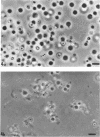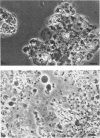Abstract
When logarithmically growing cultures of Clostridium botulinum types A and E are treated with penicillin in a liquid medium containing 8% polyethylene glycol, protoplast-like spherical bodies are formed. The penicillin effect shows a dose-response relationship; the largest yield of converted forms is obtained with 10,000 units/ml, but the treatment leaves many intact bacilli. Lower antibiotic concentrations produce smaller numbers of spherical bodies, but lysis of bacilli results in suspensions that are relatively free of rods. Cells grown under the same conditions and treated with 250 μg of lysozyme/ml do not form spherical bodies. However, a combination of 1,250 to 2,500 units of penicillin and 100 μg of lysozyme/ml yields suspensions which have sphere counts in excess of 1.0 × 108/ml and only a few intact rods. The state of the culture at the time of addition of the antibiotic and enzyme is critical. Suspensions of these protoplasts can be adapted to grow as stable L-form cultures producing the same toxin type as the parent cultures.
Full text
PDF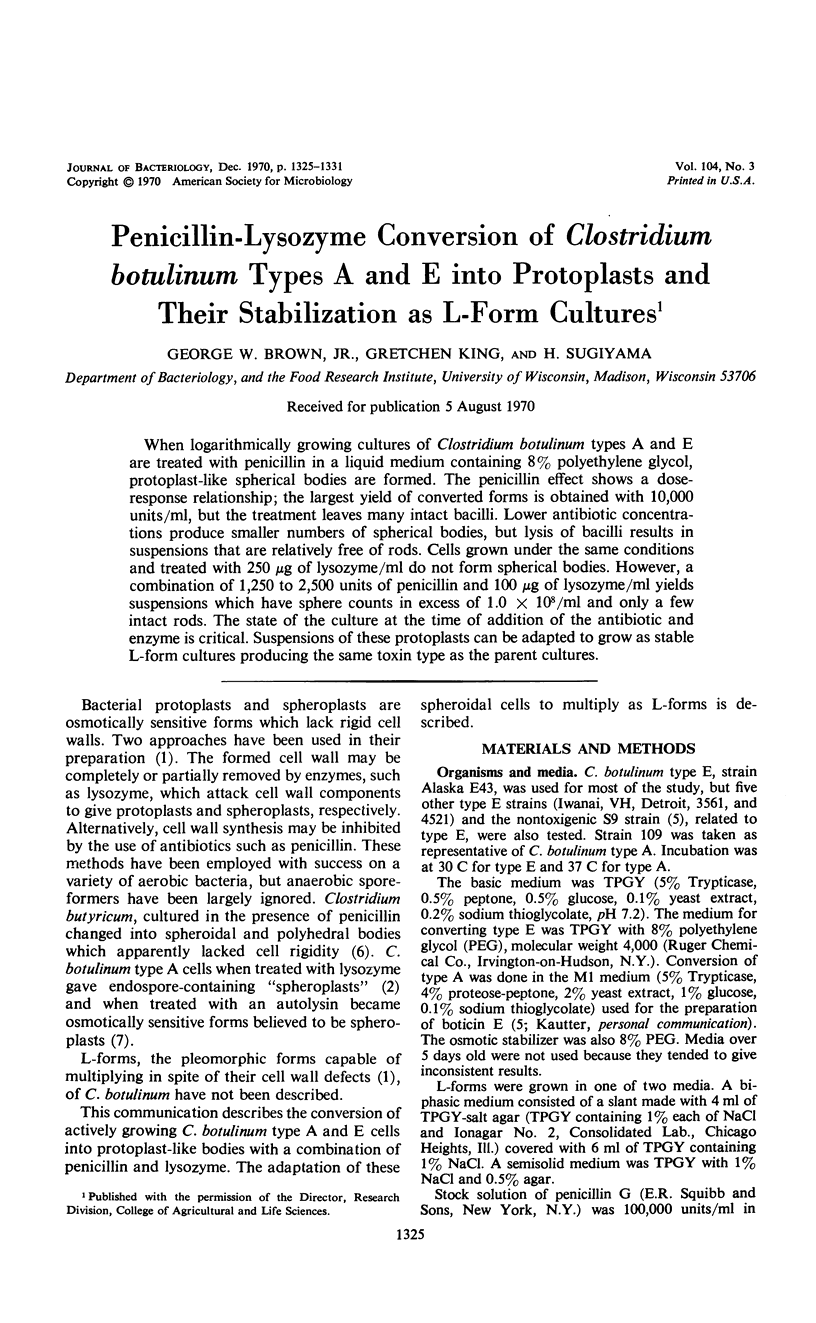
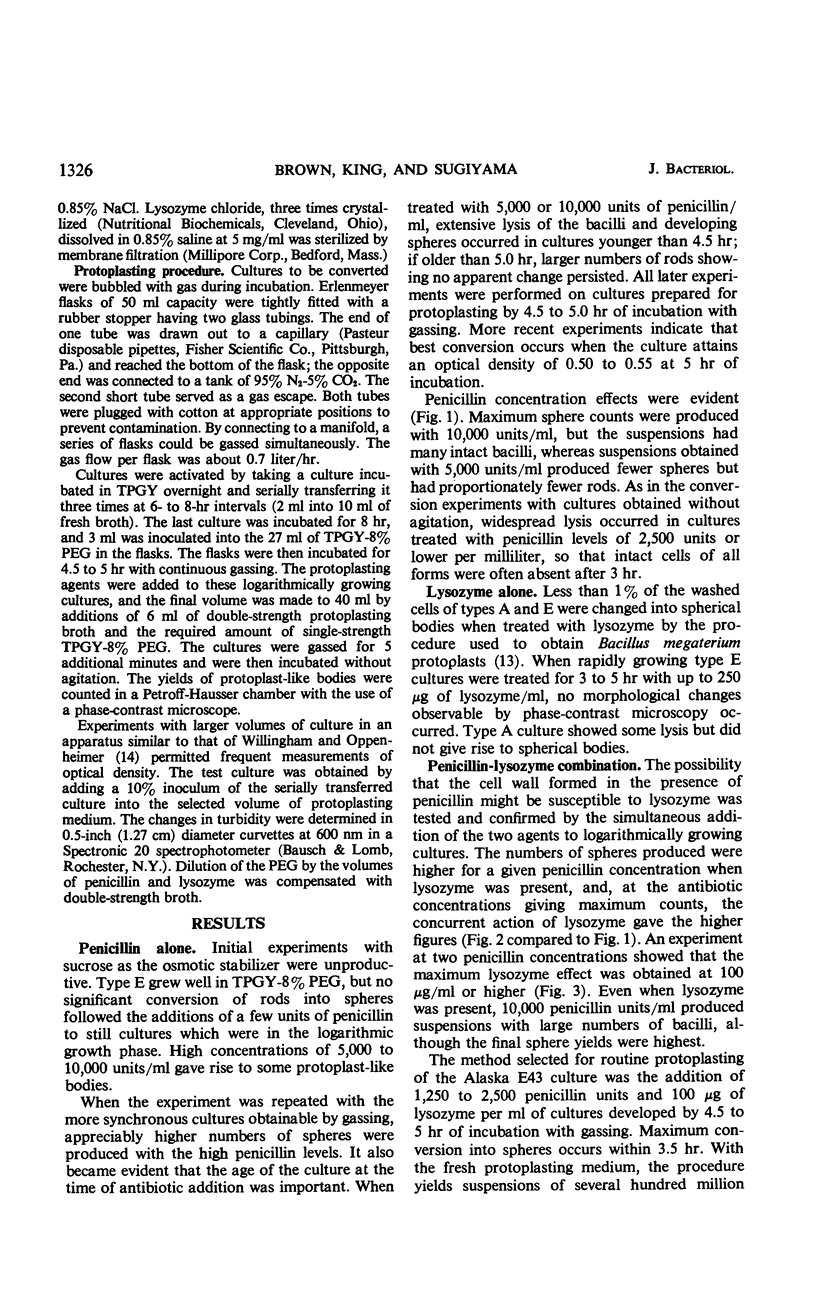
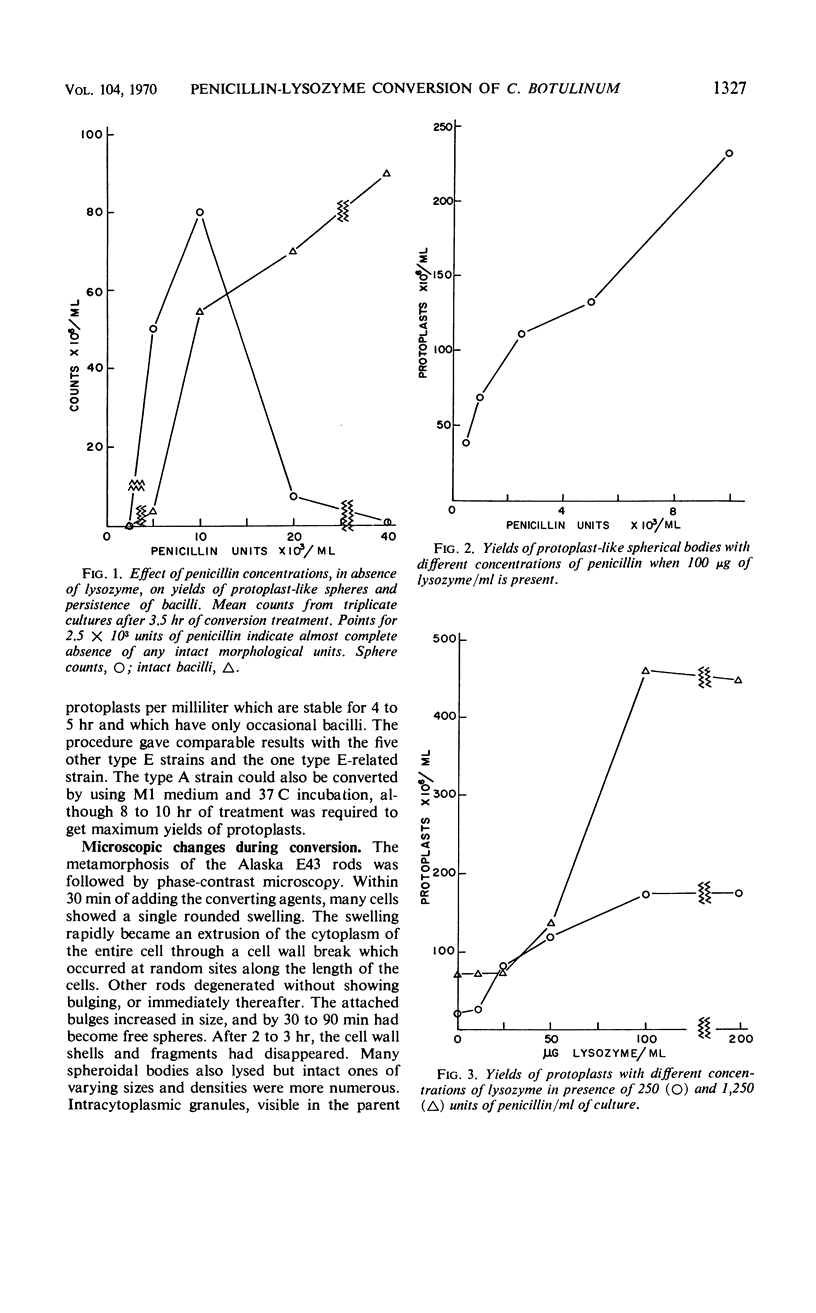
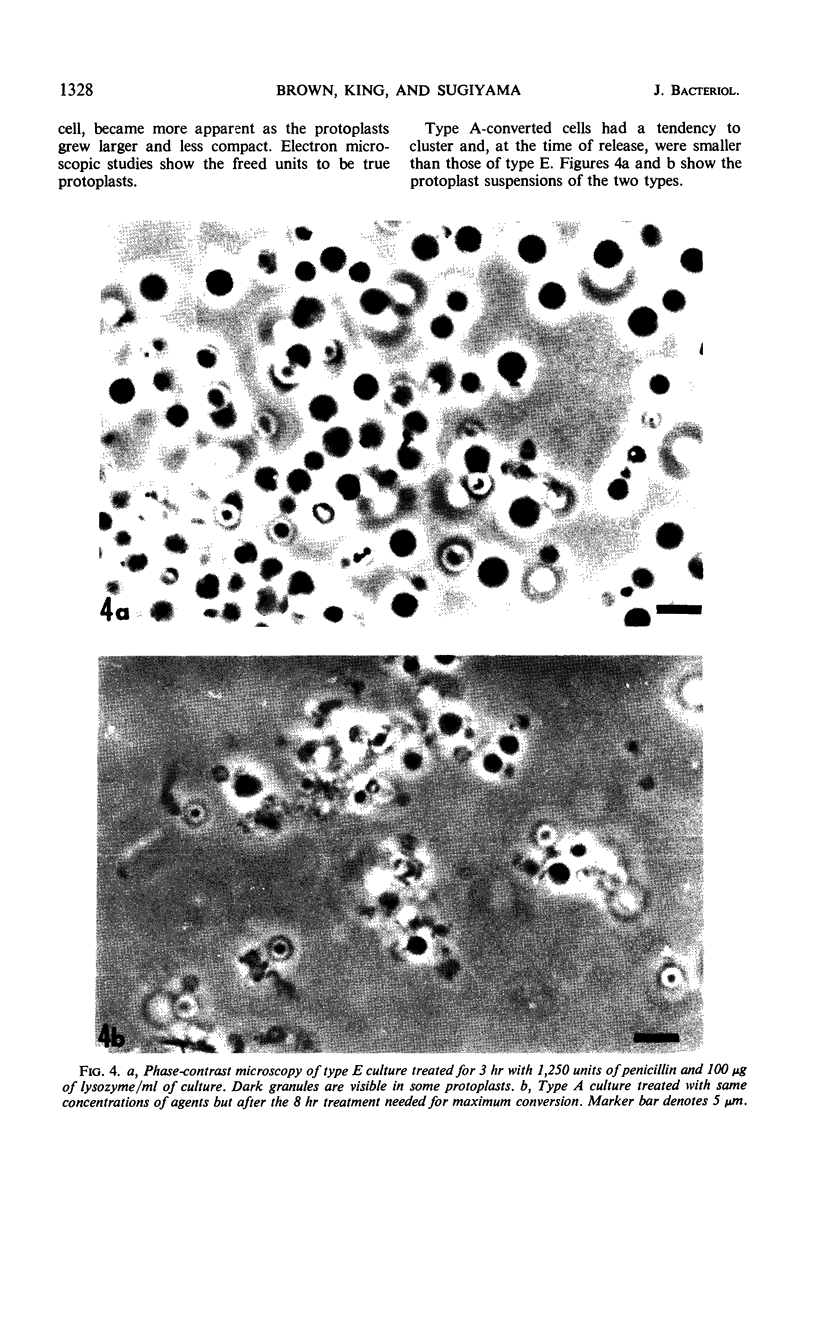
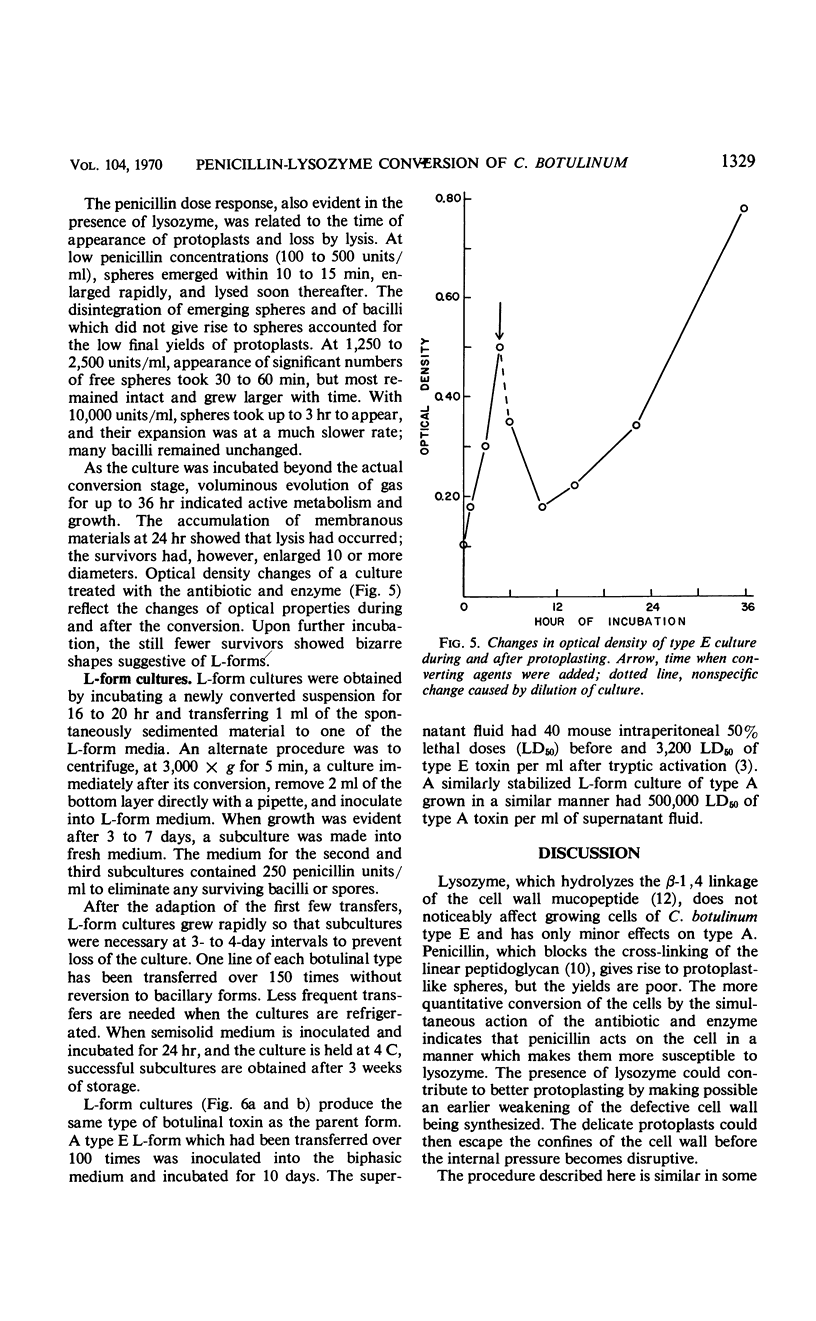
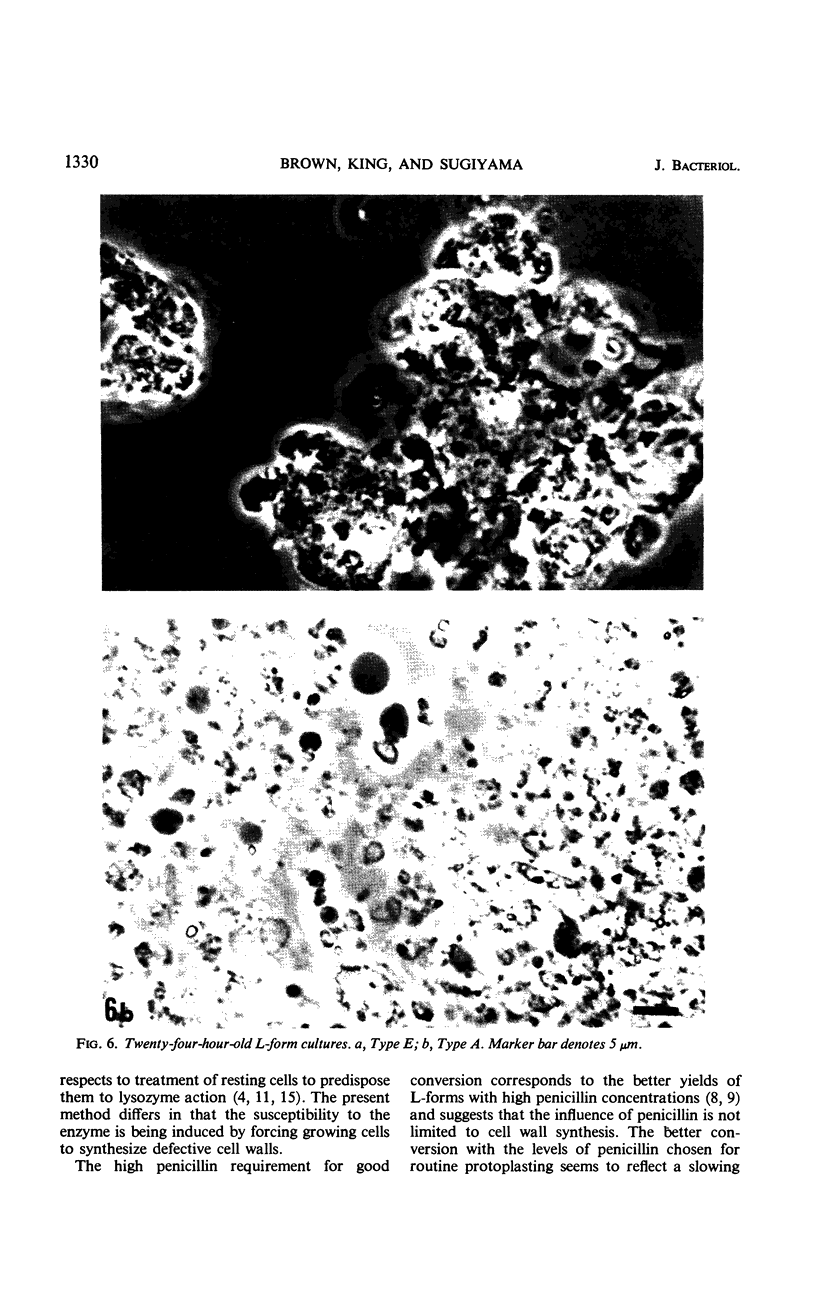
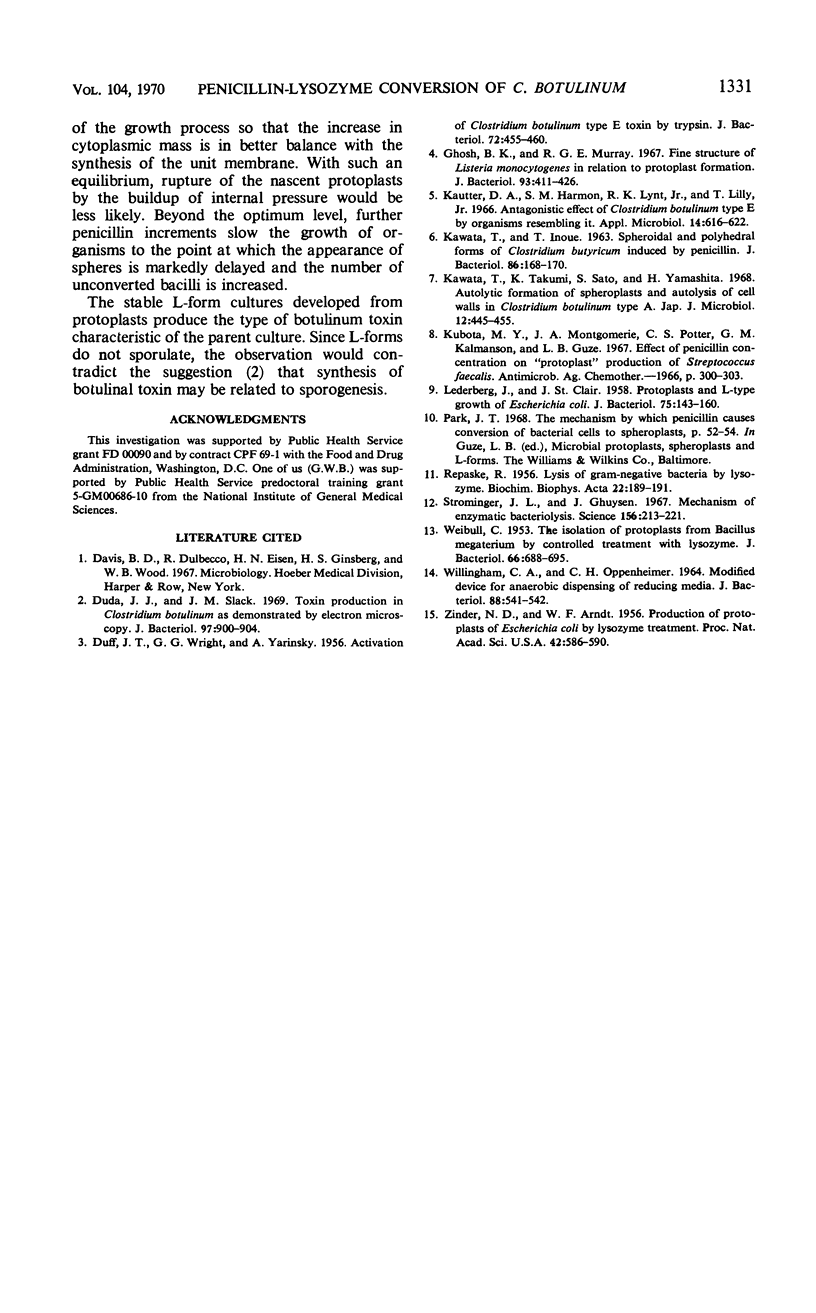
Images in this article
Selected References
These references are in PubMed. This may not be the complete list of references from this article.
- DUFF J. T., WRIGHT G. G., YARINSKY A. Activation of Clostridium botulinum type E toxin by trypsin. J Bacteriol. 1956 Oct;72(4):455–460. doi: 10.1128/jb.72.4.455-460.1956. [DOI] [PMC free article] [PubMed] [Google Scholar]
- Duda J. J., Slack J. M. Toxin production in Clostridium botulinum as demonstrated by electron microscopy. J Bacteriol. 1969 Feb;97(2):900–904. doi: 10.1128/jb.97.2.900-904.1969. [DOI] [PMC free article] [PubMed] [Google Scholar]
- Ghosh B. K., Murray R. G. Fine structure of Listeria monocytogenes in relation to protoplast formation. J Bacteriol. 1967 Jan;93(1):411–426. doi: 10.1128/jb.93.1.411-426.1967. [DOI] [PMC free article] [PubMed] [Google Scholar]
- KAWATA T., INOUE T. SPHEROIDAL AND POLYHEDRAL FORMS OF CLOSTRIDIUM BUTYRICUM INDUCED BY PENICILLIN. J Bacteriol. 1963 Jul;86:168–170. doi: 10.1128/jb.86.1.168-170.1963. [DOI] [PMC free article] [PubMed] [Google Scholar]
- Kautter D. A., Harmon S. M., Lynt R. K., Jr, Lilly T., Jr Antagonistic effect on Clostridium botulinum type E by organisms resembling it. Appl Microbiol. 1966 Jul;14(4):616–622. doi: 10.1128/am.14.4.616-622.1966. [DOI] [PMC free article] [PubMed] [Google Scholar]
- Kawata T., Takumi K., Sato S., Yamashita H. Autolytic formation of spheroplasts and autolysis of cell walls in Clostridium botulinum type A. Jpn J Microbiol. 1968 Dec;12(4):445–455. doi: 10.1111/j.1348-0421.1968.tb00418.x. [DOI] [PubMed] [Google Scholar]
- Kubota M. Y., Montgomerie J. Z., Potter C. S., Kalmanson G. M., Guze L. B. Effect of penicillin concentration on "protoplast" production of Streptococcus faecalis. Antimicrob Agents Chemother (Bethesda) 1966;6:300–303. doi: 10.1128/AAC.6.3.300. [DOI] [PubMed] [Google Scholar]
- LEDERBERG J., ST CLAIR J. Protoplasts and L-type growth of Escherichia coli. J Bacteriol. 1958 Feb;75(2):143–160. doi: 10.1128/jb.75.2.143-160.1958. [DOI] [PMC free article] [PubMed] [Google Scholar]
- REPASKE R. Lysis of gram-negative bacteria by lysozyme. Biochim Biophys Acta. 1956 Oct;22(1):189–191. doi: 10.1016/0006-3002(56)90240-2. [DOI] [PubMed] [Google Scholar]
- Strominger J. L., Ghuysen J. M. Mechanisms of enzymatic bacteriaolysis. Cell walls of bacteri are solubilized by action of either specific carbohydrases or specific peptidases. Science. 1967 Apr 14;156(3772):213–221. doi: 10.1126/science.156.3772.213. [DOI] [PubMed] [Google Scholar]
- WEIBULL C. The isolation of protoplasts from Bacillus megaterium by controlled treatment with lysozyme. J Bacteriol. 1953 Dec;66(6):688–695. doi: 10.1128/jb.66.6.688-695.1953. [DOI] [PMC free article] [PubMed] [Google Scholar]
- WILLINGHAM C. A., OPPENHEIMER C. H. MODIFIED DEVICE FOR ANAEROBIC DISPENSING OF REDUCED MEDIA. J Bacteriol. 1964 Aug;88:541–542. doi: 10.1128/jb.88.2.541-542.1964. [DOI] [PMC free article] [PubMed] [Google Scholar]
- Zinder N. D., Arndt W. F. PRODUCTION OF PROTOPLASTS OF ESCHERICHIA COLI BY LYSOZYME TREATMENT. Proc Natl Acad Sci U S A. 1956 Sep;42(9):586–590. doi: 10.1073/pnas.42.9.586. [DOI] [PMC free article] [PubMed] [Google Scholar]



